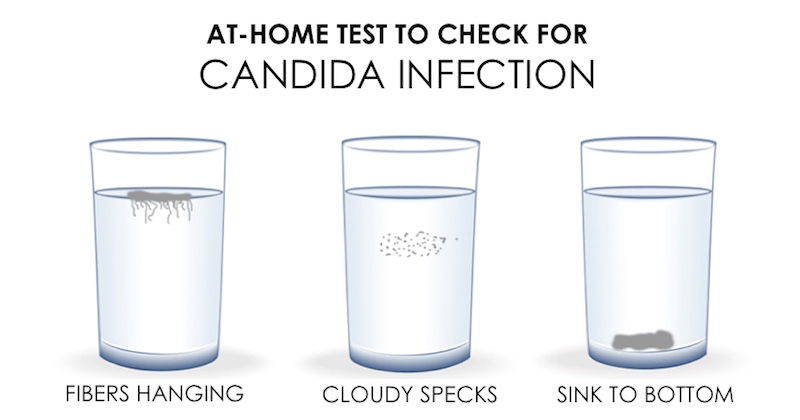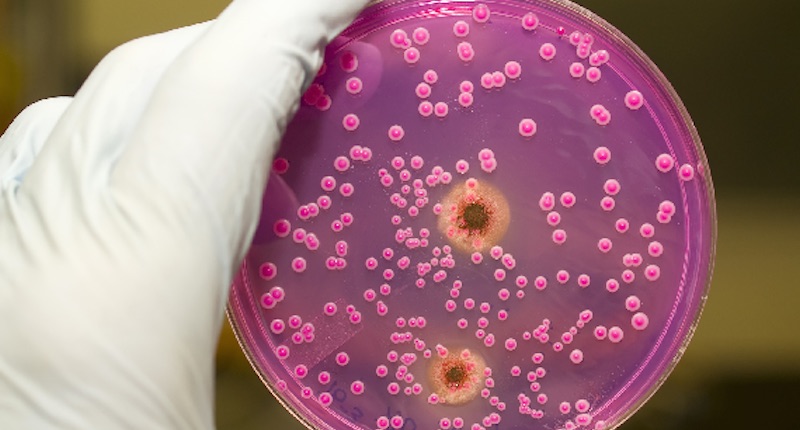You may have heard of the word candidiasis, candida overgrowth, candida infections and such, and wondering what it actually is. Candidiasis is one of the most common bloodstream infections in the United States, but very few people know that they are infected, even less about what it is and how to treat it.
Have you been experiencing random symptoms? Your doctor might think you’re exaggerating, but you might be dealing with candida.
What Is A Candida Overgrowth?
Candida, full name candida albicans, is a type of fungus or yeast. It’s actually a normal part of your gut flora, and can live in your digestive tract without causing problems. Most people have some candida in their system, but many have no symptoms or problems.
However, if your gut flora is thrown out of balance, candida takes advantage. This is when “candida overgrowth” or “candida infection” occurs.
A candida infection can grow out of control, and produce toxins that can damage your gut. The damage then spreads throughout your body as the toxins go through the bloodstream to the rest of your body. These can cause widespread symptoms that mainstream healthcare may not be able to detect.
How Do You Get Candida Overgrowth (Or Candida Infection)?
Candida overgrowth isn’t just luck of the draw. It’s usually one or more factors that make you vulnerable. These factors may include:
- A high sugar or carbohydrate diet
- A low fiber diet
- Antibiotics and other medications that affect gut health
- Chronic stress
- Uncontrolled diabetes
- Other digestive disorders
- High chemical exposure
All of these factors either impair good flora, or act as a fuel source for candida growths. So put simply – you get candida by weakening your good gut flora, or feeding your candida colonies, or a combination.
What Are The Symptoms Of Candida Overgrowth?
How do you know you’re dealing with candida? One big clue is in the symptoms. Candida can cause a wide variety of symptoms. The most common include:
- Recurrent yeast infections
- Oral thrush
- Fungal infections on skin or nails
- Athlete’s foot
- Sinus infections
- Chronic fatigue and exhaustion
- Digestive problems
- Brain fog
- Development of food allergies and intolerances
- Poor immunity
- Moodiness and depression
- Sugar cravings
Other symptoms may include:
- Body odor and bad breath
- Dizziness
- Unexplained nausea
- Poor memory and concentration
- Anxiety and panic attacks
- Body aches and pains
- Low libido
- Itchiness around genital area or in anus
Simple At-Home Test To Check If You Have Yeast Infection
If you have many of the above symptoms, it might be worthwhile to do a simple test to know for sure if you have candida overgrowth, or yeast infection.
For a simple at-home test try the following:
First thing in the morning, before you put anything in your mouth and before brushing your teeth, do this. Fill a clear glass with room temperature bottled water. Be sure to use only bottled water or distilled water. Tap water may contain chemicals that can interfere with the test.
Work up a bit of saliva, and spit it into the glass of water. Check the water every 15 minutes or so for up to one hour.
If you see strand-like tendrils (fibers) traveling down into the water from the saliva floating on the top, cloudy specks (particles suspended in the water) or cloudy saliva that sinks to the bottom of the glass you have a candida problem.
A “healthy” spit should remain floating in a nice, cohesive “blob”
How Can You Treat Candida Overgrowth?
The treatment for candida may vary from individual to individual, depending on the severity. Some people will require medical intervention with antifungal drugs. However, many people can see great results by taking natural antibiotics and consuming an anticandida diet.
This anticandida protocol is designed to kill candida and reduce them to a minimum, preventing them from causing problems in the body. The candida diet starves the yeast of its main fuel source—sugar. This protocol will help to rebuild a healthy digestive tract, so that candida growth is controlled.
1. A Good Gastrointestinal Cleanse
A gastrointestinal cleanse in conjunction with taking the antifungal is a good way to remove the bulk of die-off. Follow this gastrointestinal cleanse for at least three days and drink plenty of water. I cannot stress the importance of drinking plenty of water whenever you do a cleanse of any sort.
Do this fiber drink cleanse for up to 28 days. On the third day, if you are eliminating completely with floating stools, it means you’re ready to take on the antifungals. Do not take the antifungal until you have complete and regular bowel movements as this is necessary to eliminate the die-off yeast efficiently.
2. Antifungals
On the third day after doing a gastrointestinal cleanse, and you’re eliminating completely, start taking any of these antifungals to kill the candida.
There are conventional and natural options for antifungals and they are a great help as a tool to speed up elimination.
CanXida Remove contains 12 potent antifungals and my favorite go-to when recommending to my clients. You can read more about its ingredients and buy it here.
Other natural antifungals that are often used include:
- Caprylic acid (from coconut)
- Oregano oil: 3-4 drops in drinking water, 2-3 times a day.
- Garlic: Check out this page and follow instructions on eating minced raw garlic in the night.
- Grapeseed seed extract
- Coconut oil
- Castor oil
- Diatomaceous earth
- Thyme essential oil
- Lemongrass: Check out here how you can boil lemongrass water for treatment
Keep in mind that although antifungals speed up the process, they can also lead to “die-off reactions”. Die-off reactions may cause low-grade fever and shivering which are normal. Should you encounter these, reduce dosage and drink plenty of water. (Read more about die-off reactions below).
Side effects from prescription antibiotics tend to be worse and is best avoided.
3. Main Principles Of The Candida Diet
On an anticandida diet, you can consume:
- Non-starchy vegetables, leafy green vegetables
- Drinking green vegetable juices daily is beneficial for killing yeast
- Low-sugar fruits in small amounts—berries are recommended
- Proteins—plant protein preferred
- Healthy fats and oils
- Gluten-free whole-grains and pseudo-grains
- Natural sugar-free sweeteners such as stevia
- Fermented foods
- Herbal teas
- Butter, yogurt and kefir
- Nuts and seeds
- Herbs, spices and sugar-free condiments
4. Eliminate Foods That Feed Candida
However, there are many foods that need to be avoided while rebuilding gut health and clearing out candida. Foods to avoid include:
- High sugar fruits
- Gluten-containing grains
- Processed meats such as lunch meats
- Most dairy
- Condiments with added sugar
- Processed vegetable oils
- Sugar products of any kind, including maple syrup, coconut sugar, agave
- Artificial sweeteners
- Soft drinks
- Caffeinated beverages
- Alcohol
These foods contribute to overgrowth and weakening of gut flora. By eliminating them, you stop feeding candida and stunt their growth.
5. Take A Probiotic Supplement Or Eat Fermented Foods
Like antifungals, probiotic supplements can be used to speed up the process. Probiotics are necessary to help restore and repopulate a healthy gut flora.
For an appropriate probiotic supplement, you should consult your nutrition professional for a recommendation or check this page for comprehensive guide. However, if you prefer, you can choose to include probiotic foods. Probiotic foods include:
- Natural yogurt
- Kefir
- Sauerkraut
- Kimchi
- Pickle and pickled vegetables
- Apple cider vinegar with ‘mother’
- Olives
6. Lifestyle Adjustments To Eliminate Candida
One commonly overlooked factor in candida treatment is lifestyle. Stress, smoking, drugs/medications and poor sleep can be just as bad for gut health as what we eat. So if you are serious about eliminating candida, consider:
- Evaluating medication use, and using only when necessary
- Changing to a barrier method of contraceptive over hormonal methods
- Following good sleep hygiene rules and aim for 8 hours minimum per night
- Giving up smoking and drug use
- Seeking help with stress management
- Remember to consult your health practitioner before changing medications or quitting substances.
Die-off Reactions From A Candida Protocol
The number one reason why people fail at eliminating candida is the die-off reaction. Die-off occurs when large amounts of candida dies, and releases toxins into the system. This can make you feel much worse, and make you want to give up.
If you start to experience symptoms after starting a candida protocol, try these tips:
- Increase your water intake to help support detoxification
- Reduce or stop use of antifungals or probiotics if using them
- Ensure you get plenty of rest
- Consider liver-supportive supplements such as milk thistle to help detoxification
Although some people don’t experience a die-off reaction, it is best to assume that you will experience a reaction. Many people begin their candida protocol on their holiday time, so that they can rest without missing work.
Living with candida is hard. Treating it can feel difficult, especially in the early stages. But with determination, and the right treatment protocol and diet, you can take control of your life back. Soon you will be feeling happier, healthier and ready to take on the world again!
After following the protocol as mentioned in this article carefully, do an at-home spit test from time to time to check how you’re doing. You’ll know you’re candida free when your spit remains in a nice, cohesive “blob”.
Be well!!
Source: www.juicing-for-health.com
Tagged: candida, candidiasis

